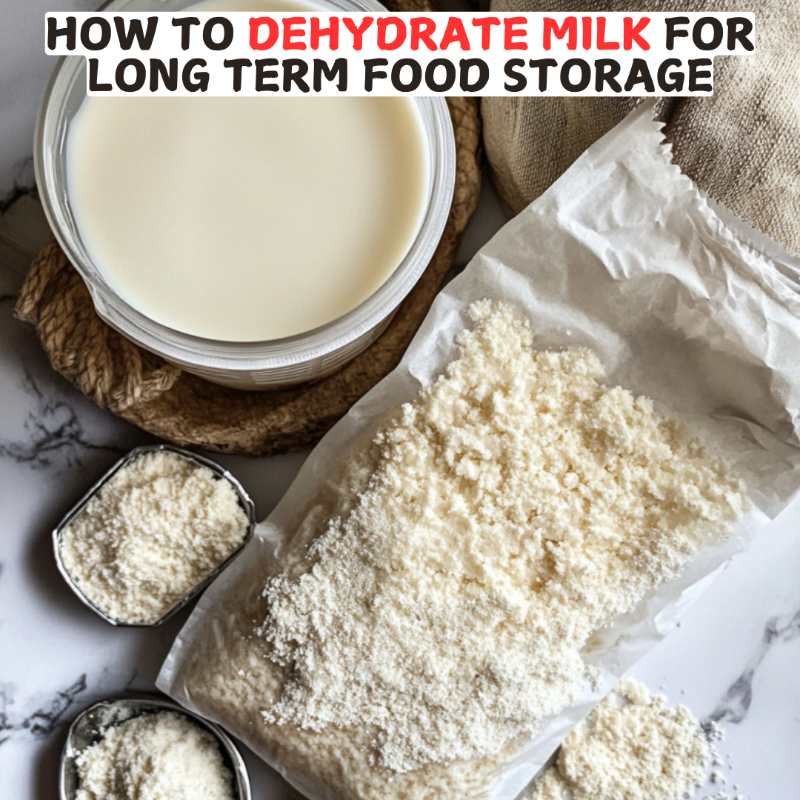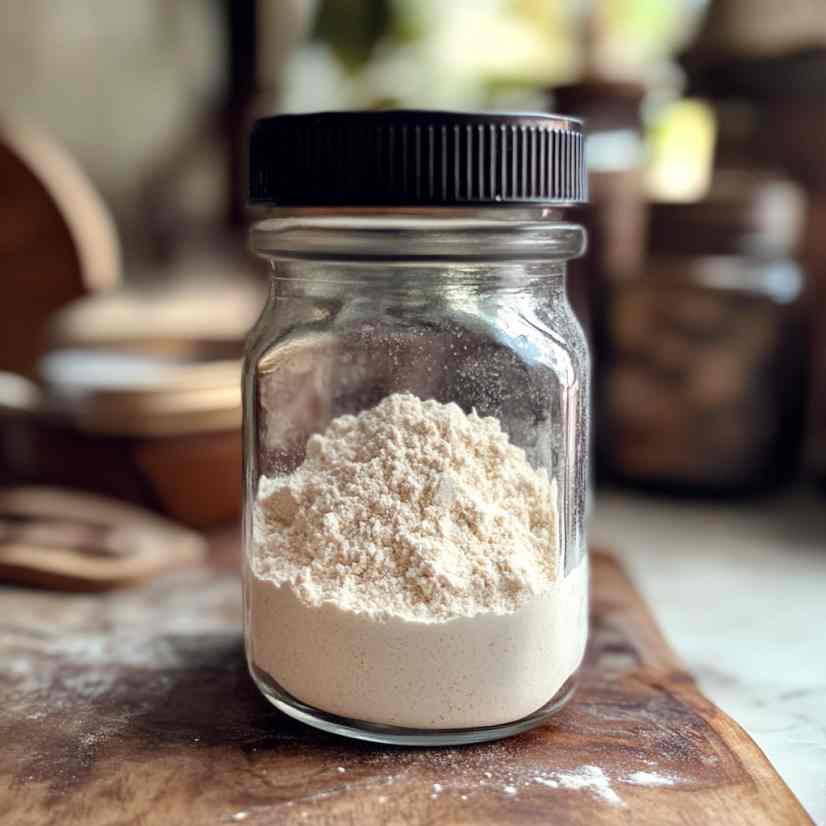How To Dehydrate Milk For Long Term Food Storage

Make sure to like Living Green and Frugally on Facebook, Shop at Amazon to help support my site and explore our PINTEREST BOARDS for innovative ways you can become self-sufficient.
Storing food for the long term can be a lifesaver in emergencies, or even just a way to be more self-sufficient at home. Dehydrating milk is a fantastic way to have dairy on hand without taking up fridge or freezer space, which can be especially useful for campers, off-the-grid homesteaders, or anyone interested in reducing waste.
Dehydrated milk is shelf-stable and highly versatile, whether for making baked goods, mixing into coffee, or rehydrating for a glass of milk in a pinch. Let’s dive into why dehydrating milk is a valuable skill and how you can get started on this project at home!
Why Dehydrate Milk?
Milk is a staple in many households, but fresh milk has a short shelf life, even when refrigerated. Dehydrating milk extends its shelf life significantly and reduces the need for constant refrigeration. Powdered milk can last anywhere from 1 to 20 years depending on storage conditions and methods used, making it ideal for long-term food storage.
Dehydrated milk can also save you money. If you buy milk in bulk or during sales, dehydrating it allows you to keep a large supply without the worry of spoilage. Dehydrated milk is lightweight, so it’s easier to store and transport than liquid milk, making it perfect for emergency kits, camping supplies, and RV storage. It’s also highly versatile, suitable for both sweet and savory recipes, and is easily reconstituted to resemble fresh milk.
Uses for Dehydrated Milk
Dehydrated milk can be used in a variety of ways, including:
- Baking: Add powdered milk directly to baked goods like bread, cakes, and cookies.
- Cooking: Rehydrate milk powder to add a creamy texture to soups, sauces, or mashed potatoes.
- Coffee or Tea: Mix powdered milk directly into your hot drinks for a smooth, creamy addition.
- Camping or Emergency Supplies: Simply add water to make milk on the go.
How To Dehydrate Milk
There are several methods to dehydrate milk at home, including the use of an oven, a dehydrator, or freeze-drying equipment. Here’s a detailed breakdown of each method:

1. Dehydrating Milk in a Food Dehydrator
- Equipment Needed: Dehydrator with fruit roll trays or non-stick sheets, liquid milk
- Steps:
- Set your dehydrator to its lowest setting, ideally around 135°F (57°C).
- Pour a thin layer of milk onto your dehydrator trays lined with non-stick sheets.
- Place the trays in the dehydrator and let them dehydrate for 8–12 hours. Time will vary depending on the thickness of the milk layer and dehydrator model.
- Once the milk is fully dried, it will look like brittle flakes. Remove the flakes and allow them to cool.
- Grind the flakes in a food processor or blender until they form a fine powder.
- Store the powder in an airtight container.
2. Dehydrating Milk in an Oven
- Equipment Needed: Baking sheets, non-stick sheets or parchment paper, liquid milk, blender or grinder
- Steps:
- Preheat your oven to its lowest setting, typically around 140–150°F (60–65°C).
- Pour a thin layer of milk onto baking sheets lined with non-stick sheets.
- Place the sheets in the oven and let the milk dehydrate for 10–12 hours, checking occasionally.
- Once the milk has dried into flakes, remove from the oven and let cool.
- Process the flakes into a fine powder.
- Store in an airtight container, ideally in a dark, cool place.

3. Freeze-Drying Method (if you have a freeze-dryer)
- Steps:
- Pour milk into freeze-dryer trays according to the device’s instructions.
- Set the freeze-dryer for liquid processing.
- Once the milk is dry, process into powder form and store.
Storing Your Dehydrated Milk
To ensure the longest shelf life, store your powdered milk in an airtight container. Mylar bags with oxygen absorbers are ideal for long-term storage, as they prevent moisture and light exposure. If storing in a jar, keep it in a cool, dark place and use an oxygen absorber to prevent oxidation.

Tips for Success
- Use Full-Fat vs. Skim Milk: Skim milk will last longer than full-fat milk, as the fat in milk can go rancid over time. If you want to maximize shelf life, skim milk is the way to go.
- Keep Milk Layer Thin: A thin layer will dry faster and more evenly. Thicker layers may leave you with uneven drying or wet spots.
- Watch the Temperature: Milk can scorch easily. Stick to low temperatures to ensure a better flavor and nutrient retention.
- Check Often: If you’re using an oven, check on your milk every couple of hours to avoid burning.
Common Questions About Dehydrating Milk
How long does dehydrated milk last?
Dehydrated milk can last from 1 to 20 years, depending on the storage method and fat content. Powdered skim milk, stored in ideal conditions, typically lasts longer than whole milk powder.
Can I dehydrate milk without a dehydrator?
Yes! You can dehydrate milk in an oven set at a low temperature. It takes a bit more time and effort than using a dehydrator, but it’s a suitable alternative.
Does dehydrated milk taste the same as fresh milk?
Reconstituted powdered milk has a slightly different taste compared to fresh milk. However, it’s still quite similar and works well in recipes. Some people add a pinch of salt or a dash of vanilla extract to improve the taste.
What can I use dehydrated milk for besides drinking?
Dehydrated milk is fantastic for baking, cooking, making creamy sauces, or even as a coffee creamer. It’s a versatile ingredient that’s easy to store and use.
Is there a difference between store-bought powdered milk and homemade dehydrated milk?
Store-bought powdered milk is often made through a spray-drying process, which creates a finer, more consistent powder. Homemade dehydrated milk may be slightly coarser but is still perfectly usable and more cost-effective.
Conclusion
Dehydrating milk is a practical, cost-effective way to build up a supply of dairy for the long term without needing refrigeration. Whether you’re a homesteader, camper, or simply someone who likes being prepared, dehydrated milk can be a valuable addition to your pantry. By following these steps and tips, you can have powdered milk on hand for cooking, baking, and emergencies for years to come. Give it a try and enjoy the convenience of dehydrated milk today!